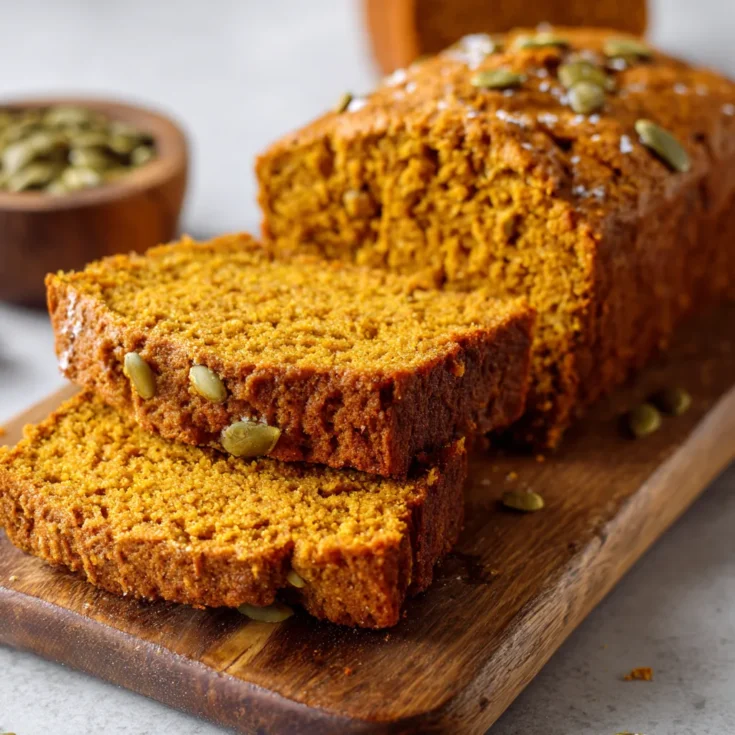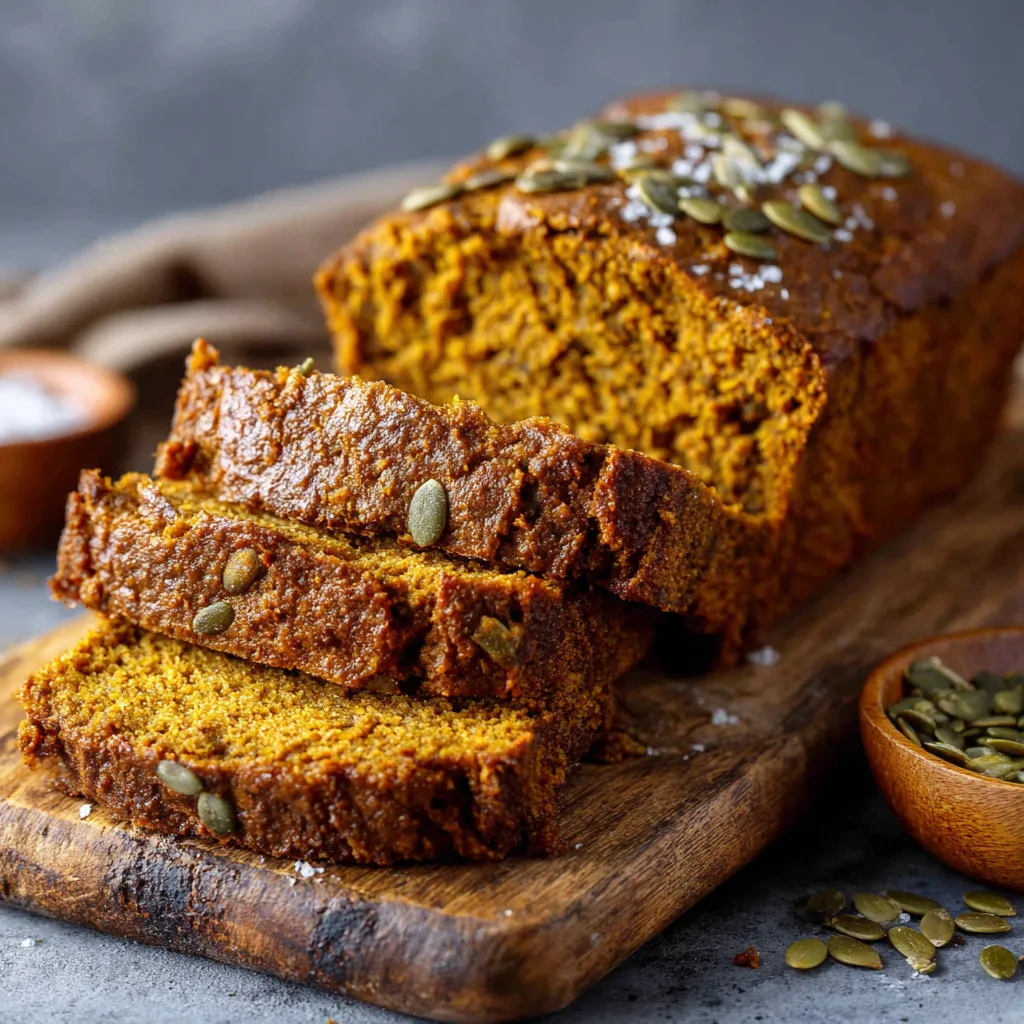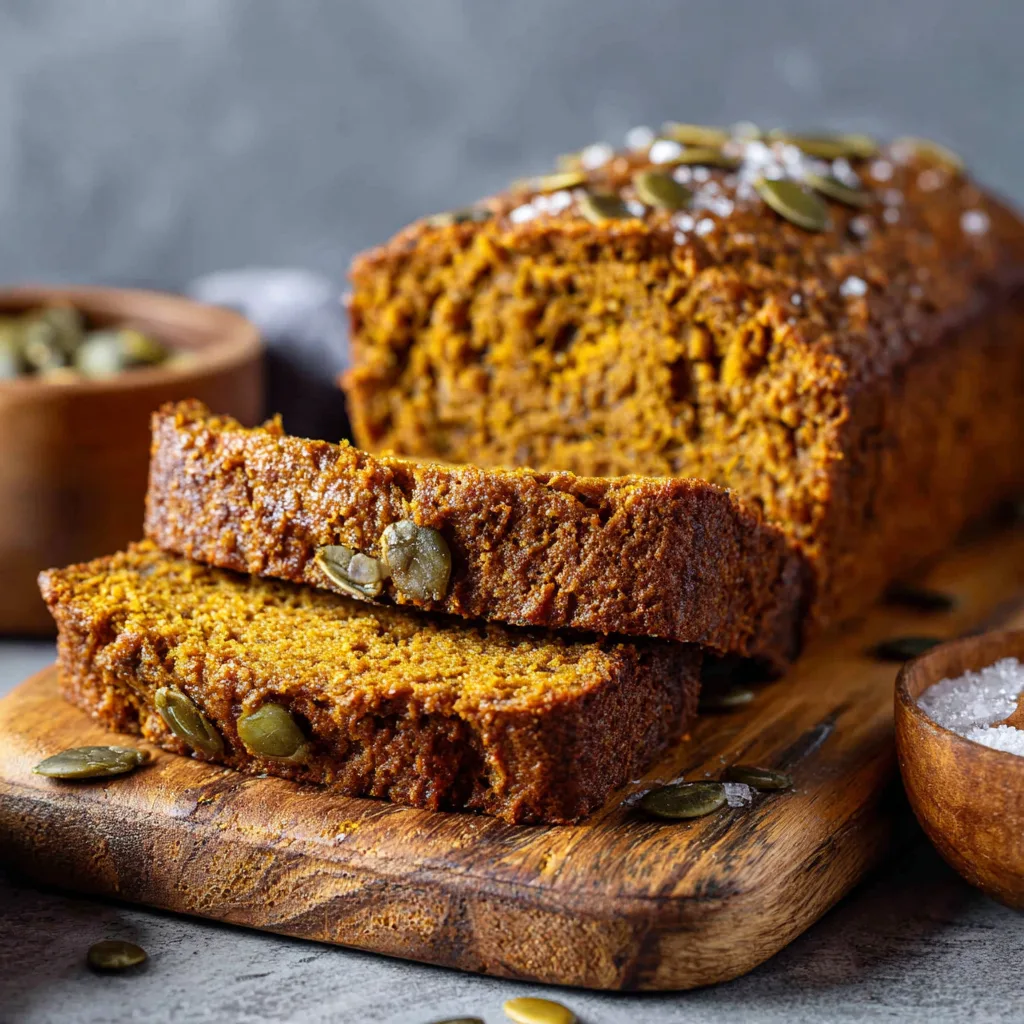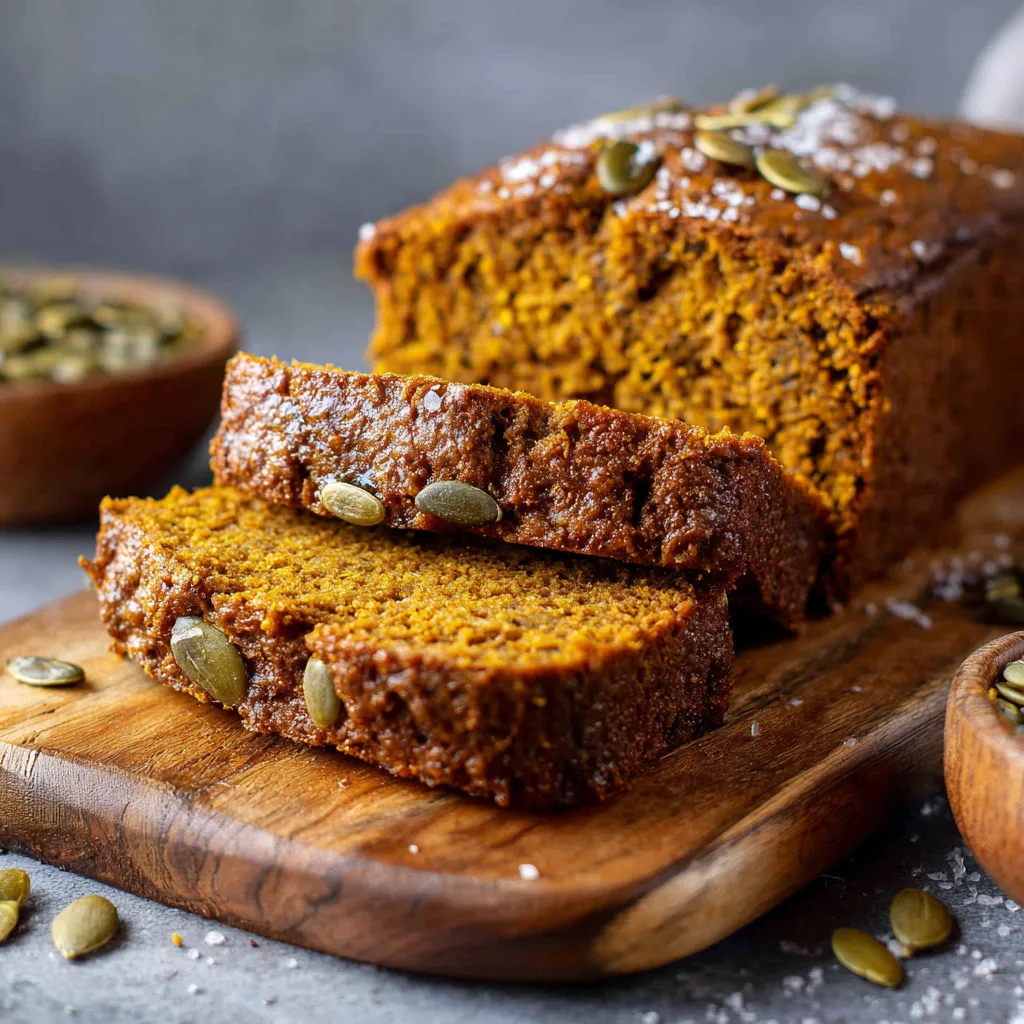Pumpkin bread has long been a cozy fall favorite. Its warm spices and rich flavor capture the essence of autumn in every slice. Traditionally, this comforting treat comes packed with sugar and refined flour. While delicious, it’s not always the best fit for today’s health-conscious lifestyles.
That’s where wholesome low carb pumpkin bread steps in. This better-for-you version keeps all the fall flavors you love but swaps out high-carb ingredients. Instead of white flour, it uses nutrient-rich alternatives like almond or coconut flour. Natural sweeteners such as monk fruit or erythritol replace refined sugar, cutting carbs without sacrificing taste.
Why does this matter? Choosing a low carb option helps support balanced blood sugar, especially for those on ketogenic or diabetic-friendly diets. It also fits perfectly into gluten-free, grain-free, or paleo eating plans. You get the flavor and texture of classic pumpkin bread—without the carb overload.
What truly sets this wholesome version apart is its clean, nourishing ingredient list. Every bite delivers real pumpkin, healthy fats, warming spices, and fiber-rich flours. It’s baked with your health in mind, offering a moist and satisfying result the whole family can enjoy.
In this article, you’ll discover everything you need to create your own loaf of wholesome low carb pumpkin bread. We’ll explore essential ingredients, the benefits of low carb baking, and step-by-step instructions for perfect results. You’ll also find smart tips for storage, variations, and answers to the most common questions. By the end, you’ll have a complete guide to baking a flavorful, low carb pumpkin bread that fits your lifestyle without compromise.
What Is Low Carb Baking?
Low carb baking reimagines traditional recipes using ingredients that reduce total carbohydrates while maximizing flavor and nutrition. This method aligns with popular eating patterns like the ketogenic diet, Atkins, and general low carb lifestyles.
Unlike standard baking that relies heavily on flour and sugar, low carb baking replaces these with nutrient-dense alternatives. The goal is to create delicious, satisfying treats without the blood sugar spikes caused by refined carbs.
Why make the switch? For many, low carb baking supports better blood sugar control. This is crucial for people managing diabetes or insulin resistance. It also aids in weight management by keeping you fuller longer and minimizing cravings.
Low carb baked goods are often higher in healthy fats and fiber. These changes improve digestion, enhance satiety, and reduce the risk of energy crashes. With the right ingredients and techniques, low carb baking delivers treats that nourish without compromise.
Key Ingredients in Wholesome Low Carb Pumpkin Bread
Creating a wholesome loaf begins with carefully chosen ingredients. Each one plays a role in taste, texture, and health benefits.
Pumpkin – Nutrition and Role in Baking
Pumpkin is the star of this recipe—not just for flavor, but for nutrition too. It’s rich in vitamins A and C, potassium, and antioxidants. Pumpkin also provides a healthy dose of fiber, helping improve digestion and satiety.
In baking, pumpkin adds natural moisture and tenderness. It contributes a subtle sweetness and smooth texture. This makes it ideal for creating soft, moist bread without relying on refined oils or sugars.
Low Carb Flours and Their Uses
Low carb pumpkin bread replaces wheat flour with grain-free options like almond flour, coconut flour, and flaxseed meal.
Almond flour is rich in protein, fiber, and healthy fats. It lends a tender, slightly nutty texture.
Coconut flour absorbs more moisture than other flours, so you’ll use less of it. It creates a dense but fluffy crumb.
Flaxseed meal adds fiber, omega-3 fats, and a mild, earthy flavor.
These flours behave differently from wheat flour. They require more liquid and eggs to balance their density. But when used correctly, they create baked goods that are just as satisfying—without the carbs.
Natural Sweeteners
Sweetness is essential to pumpkin bread, but refined sugar isn’t. Natural low carb sweeteners keep the flavor without the glucose spike.
Erythritol offers sweetness with almost no calories or carbs. It’s widely used and has minimal aftertaste.
Monk fruit is intensely sweet and often paired with erythritol for balance.
Stevia comes in liquid or powder form and works well when used sparingly.
Allulose tastes most like sugar and bakes similarly, but is absorbed differently by the body.
Choose your sweetener based on flavor preference, availability, and baking behavior. Some blend better in batters, while others work best in glazes or frostings.
Eggs, Oils, and Binders
Eggs are essential in low carb baking. They provide structure, moisture, and help the bread rise. They also add protein, which boosts the nutritional value.
Healthy fats like coconut oil or unsalted butter enrich the texture and flavor. They keep the bread moist and soft while delivering satisfying richness.
Some recipes use binders like psyllium husk or chia seeds to improve texture. These help mimic the elasticity of gluten and prevent crumbling.
For dairy-free or vegan needs, you can use flax eggs or avocado oil. Just remember—these changes can slightly alter texture or flavor, so adjust carefully.
Health Benefits of Wholesome Low Carb Pumpkin Bread
Wholesome low carb pumpkin bread offers more than seasonal comfort—it brings real health benefits to your table. Traditional pumpkin bread is often loaded with sugar and refined flour. This leads to spikes in blood sugar and leaves you feeling hungry shortly after eating.
By contrast, low carb pumpkin bread uses natural sweeteners and nutrient-dense flours. These changes help regulate blood sugar and avoid energy crashes. That’s especially important for people managing diabetes or insulin resistance.
This bread also delivers a satisfying mix of protein and fiber. Almond flour and flaxseed meal provide essential fats, protein, and digestion-supporting fiber. Together, these ingredients promote fullness and reduce cravings.
Whether you’re following a ketogenic, paleo, or general low carb diet, this bread fits your plan. It satisfies your cravings for something warm and comforting—without sabotaging your goals. The benefits go beyond weight management. You’re feeding your body nourishing ingredients with every slice.
Potential Challenges in Low Carb Pumpkin Bread Baking
While rewarding, low carb baking comes with its own set of challenges. One common issue is texture. Without gluten, which gives traditional bread its structure, the loaf can turn out dense or crumbly.
To prevent this, use a blend of low carb flours and the right ratio of wet ingredients. Eggs help bind everything, while pumpkin adds moisture. A small amount of psyllium husk or flaxseed meal can improve structure and softness.
Another challenge is dryness. Low carb flours tend to absorb more liquid. Make sure to measure ingredients carefully. Don’t pack flours into the measuring cup—spoon them in and level off. This small habit improves results significantly.
Ingredient quality also matters. Use fresh baking powder and high-quality sweeteners. Old or off-brand ingredients may not react properly, leading to flat or bitter results.
Even seasoned bakers need to test and tweak. But with practice, your low carb pumpkin bread will come out moist, flavorful, and just right every time.
Dietary and Allergen Considerations
Wholesome low carb pumpkin bread is naturally gluten-free and grain-free, making it ideal for people with gluten intolerance or celiac disease. It’s also a good fit for grain-free diets like paleo.
However, most low carb versions rely on almond flour. This poses a challenge for those with nut allergies. In such cases, you can substitute sunflower seed flour or use a blend of coconut flour and flaxseed meal. Just remember, substitutions change the texture slightly—adjust liquids as needed.
For a vegan-friendly loaf, you can replace eggs with flax eggs and opt for avocado oil instead of butter. The result will be denser but still satisfying.
Always read labels when baking for allergies or dietary needs. That small step ensures your bread is both safe and delicious for everyone at the table.
Step-by-Step Guide to Making Wholesome Low Carb Pumpkin Bread
Baking your own wholesome low carb pumpkin bread is simple when you follow a clear process. This step-by-step guide will help you prep, mix, and bake your loaf to perfection.
Preparing Your Ingredients and Kitchen
Start by choosing the right pumpkin. Canned pumpkin puree is convenient and reliable. It offers consistent texture and moisture. If using fresh pumpkin, roast and mash it until smooth. Avoid pumpkin pie filling, which contains added sugar and spices.
Next, focus on measuring your low carb flours and sweeteners with care. Almond flour, coconut flour, and erythritol behave differently than traditional ingredients. Use dry measuring cups, and never pack the flour. Spoon it in loosely, then level off the top with a knife. For sweeteners, use a flat surface to ensure even scoops.
Preheat your oven before you begin mixing. Most low carb pumpkin bread recipes bake at 325°F or 350°F. Grease a standard loaf pan or line it with parchment paper. This prevents sticking and makes for easy removal. Gather all tools—mixing bowls, spatulas, and a whisk—before starting.
With your ingredients and tools ready, you’re set for success.
Mixing and Baking Process
Combining Wet Ingredients
Begin with the wet ingredients. In a large bowl, whisk together the pumpkin puree, eggs, and melted coconut oil or butter. Add your low carb sweetener and mix until smooth. If your recipe calls for vanilla extract or apple cider vinegar, stir them in at this stage.
The goal is to create a thick, creamy base that blends easily with the dry mix. Make sure there are no lumps. This step builds flavor and moisture into every bite.
Incorporating Dry Ingredients
In a separate bowl, combine your almond flour, coconut flour, baking soda, and baking powder. Add warm spices like cinnamon, nutmeg, ginger, and cloves. These give the bread its classic fall flavor.
Slowly add the dry mixture to the wet ingredients. Stir gently with a spatula or wooden spoon. Avoid overmixing, which can make the bread dense. Mix just until the batter is uniform.
If the batter seems too thick, a splash of unsweetened almond milk can help loosen it. The final texture should be thick but spreadable.
Baking Tips and Timing
Pour the batter into the prepared loaf pan and smooth the top. Tap the pan lightly on the counter to remove air bubbles.
Bake the bread at 350°F for 45 to 55 minutes. Ovens vary, so start checking at the 40-minute mark. Insert a toothpick in the center—it should come out mostly clean with a few moist crumbs.
Let the bread cool in the pan for 10 minutes, then transfer it to a wire rack. Allow it to cool completely before slicing to prevent crumbling.
Flavor Enhancements and Variations
Low carb pumpkin bread is versatile. You can customize it to match your preferences or add a bit of flair.
For extra crunch, fold in chopped walnuts or pecans. Pumpkin seeds also add texture and seasonal charm. If you’re craving something sweet, stir in sugar-free chocolate chips or swirl in a low carb cream cheese mixture.
Enhance the flavor with spices like cardamom or allspice. A pinch of salt balances sweetness and brings out the pumpkin’s richness.
For a finishing touch, try a glaze. Mix powdered erythritol with a splash of almond milk and vanilla extract. Drizzle it over the cooled loaf for a bakery-style look. You can also top the bread with whipped cream cheese sweetened with monk fruit.
With a few simple tweaks, your loaf becomes unique while staying wholesome and low carb. Experiment and enjoy the flexibility.
How to Store Low Carb Pumpkin Bread
Proper storage keeps your low carb pumpkin bread fresh and flavorful. Once the bread has cooled completely, wrap it tightly in plastic wrap or place it in an airtight container. Store it in the refrigerator for up to 5 days. Chilling helps preserve its moisture and texture.
For longer storage, freezing is your best option. Slice the bread first, then wrap individual pieces in parchment paper and seal them in a freezer bag. This way, you can thaw only what you need. The bread stays fresh in the freezer for up to 3 months.
When ready to eat, defrost a slice in the refrigerator overnight or warm it gently in the microwave for a quick treat. Always avoid storing the bread at room temperature for more than a day, especially in humid environments, as it can spoil quickly due to its moist texture.
Serving Suggestions
Low carb pumpkin bread shines at any time of day. Serve it warm with your morning coffee or herbal tea for a cozy breakfast. Add a dollop of unsweetened almond butter or whipped cream cheese for a richer bite.
You can also transform it into a satisfying snack. Toast a slice and top it with chopped nuts or a sprinkle of cinnamon. If you’re hosting brunch, cut the bread into cubes and serve it as part of a low carb bread platter alongside berries and nuts.
For variety, try layering slices with yogurt and seeds for a wholesome parfait. Its mild sweetness and warm spice make it easy to pair with both sweet and savory toppings.
Troubleshooting Common Issues
If your bread turns out too dense or crumbly, you might be using too much flour or not enough eggs. Stick to accurate measurements and avoid overbaking. Adding an extra egg or tablespoon of oil can also improve texture.
Too dry? Reduce baking time slightly or add a tablespoon of unsweetened pumpkin puree next time. If the loaf is too moist, ensure you’re not overmixing the batter or using too much pumpkin.
Test, adjust, and keep notes—each small change moves you closer to the perfect slice.
FAQs About Wholesome Low Carb Pumpkin Bread
Can I use canned pumpkin or should I use fresh?
Yes, both work well. Canned pumpkin puree offers convenience and consistency. Fresh pumpkin, when roasted and pureed, can also deliver great flavor. Just be sure it’s not too watery.
What is the best low carb flour for pumpkin bread?
Almond flour is the top choice for soft texture and rich taste. Coconut flour and flaxseed meal work well as supplements but absorb more liquid. A mix often yields the best results.
Can I make this recipe vegan or dairy-free?
Yes. Replace eggs with flax eggs and use coconut oil instead of butter. While the texture may be denser, the flavor remains delicious.
How long does low carb pumpkin bread last?
Stored in the fridge, it stays fresh for up to 5 days. If frozen, it keeps for up to 3 months. Always let it cool before storing.
Is low carb pumpkin bread suitable for diabetics?
Absolutely. With no refined sugar and low net carbs, it helps avoid blood sugar spikes. Always check with a healthcare provider for specific dietary needs.
Can I freeze low carb pumpkin bread?
Yes. Slice the cooled loaf, wrap pieces individually, and store them in a sealed freezer bag. Thaw in the fridge or microwave when ready to eat.
What are the best natural sweeteners to use?
Erythritol, monk fruit, and allulose are top picks. They provide sweetness without the glycemic impact of sugar. Choose based on taste preference and recipe behavior.
Wholesome Low Carb Pumpkin Bread – Moist, Healthy & Grain-Free

A moist and flavorful pumpkin bread made with wholesome low carb ingredients, perfect for a healthy fall treat.
Ingredients
- 1 cup almond flour
- 1/4 cup coconut flour
- 1 cup pumpkin puree
- 3 large eggs
- 1/3 cup erythritol or monk fruit
- 1/4 cup melted coconut oil
- 1 tsp vanilla extract
- 1 tsp cinnamon
- 1/2 tsp nutmeg
- 1/4 tsp ground cloves
- 1 tsp baking powder
- 1/2 tsp baking soda
- Pinch of salt
Instructions
Notes




